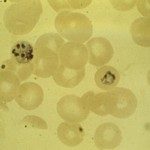Lien vers Pubmed [PMID] – 30103089
Lien vers HAL – hal-02570740
Lien DOI – 10.1016/j.gde.2018.07.008
Current Opinion in Genetics and Development, 2018, 53, pp.90-97. ⟨10.1016/j.gde.2018.07.008⟩
Central Africa, a forested region that supports an exceptionally high biodiversity, hosts the world’s largest group of hunter-gatherers, who live in close proximity with groups that have adopted agriculture over the past 5000 years. Our understanding of the prehistory of these populations has been dramatically hampered by the almost total absence of fossil remains in this region, a limitation that has recently been circumvented by population genomics approaches. Different studies have estimated that ancestors of rainforest hunter-gatherers and Bantu-speaking farmers separated more than 60 000 years ago, supporting the occurrence of ancient population structure in Africa since the Late Pleistocene. Conversely, the Holocene in central Africa was characterized by large-scale population migrations associated with the emergence of agriculture, and increased genetic interactions between autochthonous rainforest hunter-gatherers and expanding Bantu-speaking farmers. Genomic scans have detected numerous candidate loci for positive selection in these populations, including convergent adaptation for short stature in groups of rainforest hunter-gatherers and local adaptation to endemic malaria in western and central Africans. Furthermore, there is recent increasing evidence that adaptive variation has been acquired by various African populations through admixture, suggesting a previously unappreciated role of intraspecies gene flow in local adaptation. Ancient and modern DNA studies will greatly broaden, and probably challenge, our view on the past history of central Africa, where introgression from yet uncharacterized archaic hominins and long-term adaptation to distinct ecological niches are suspected.



